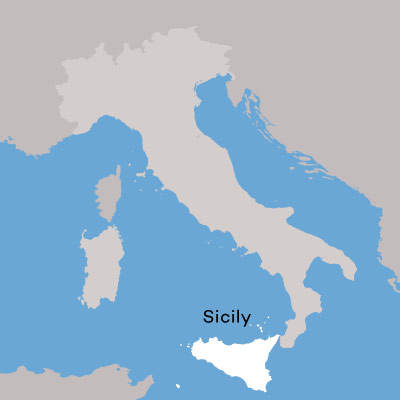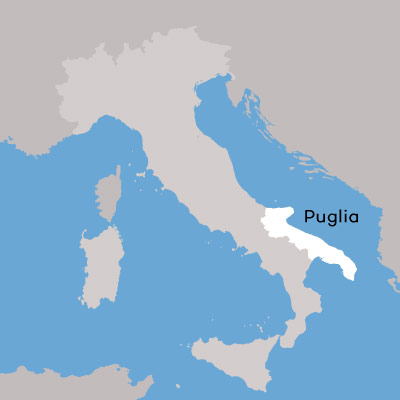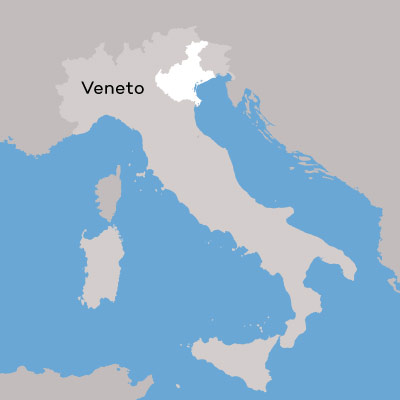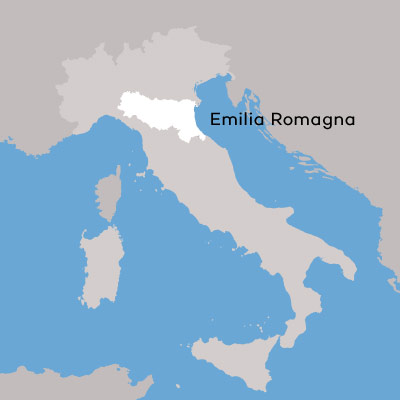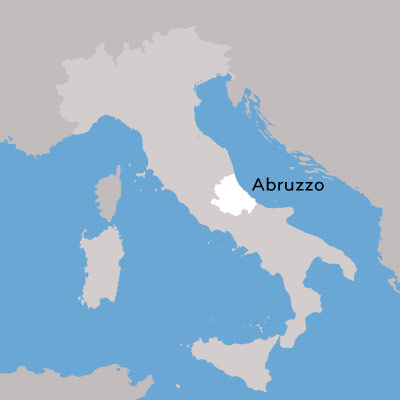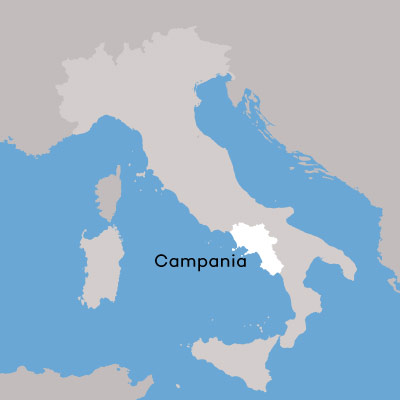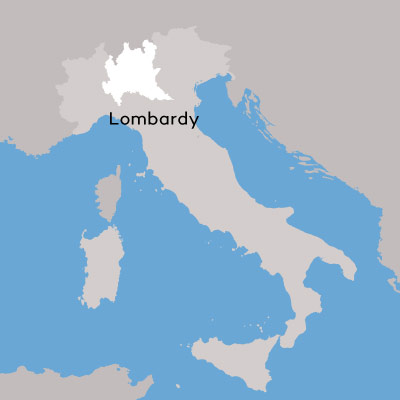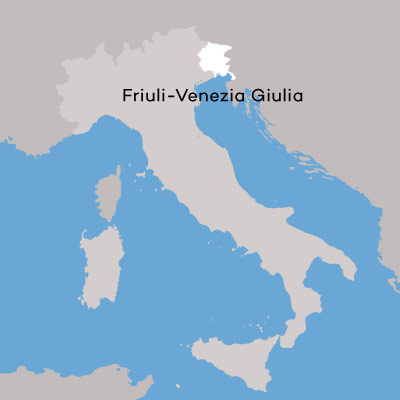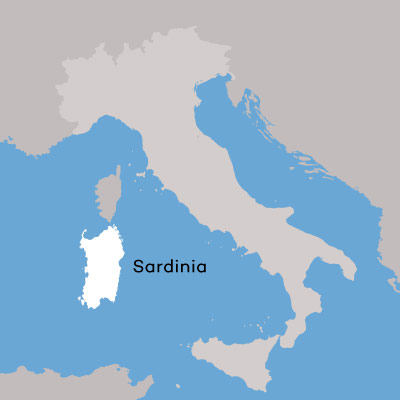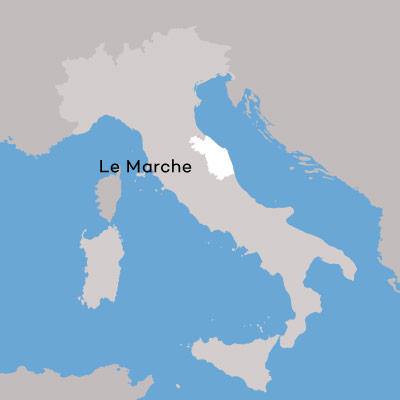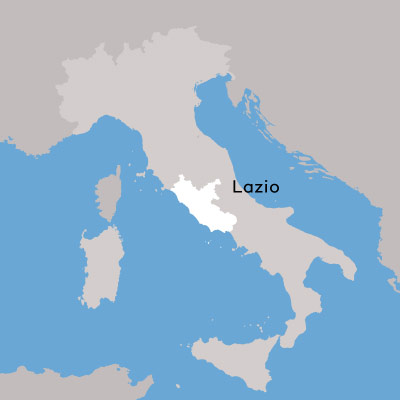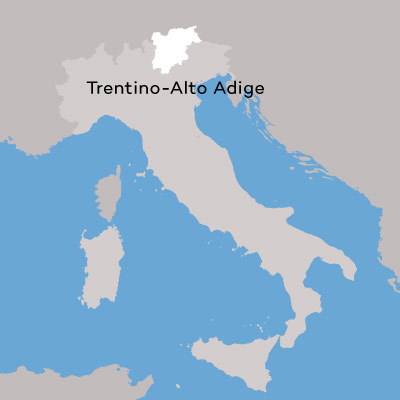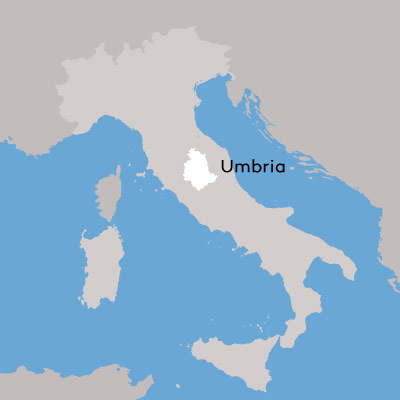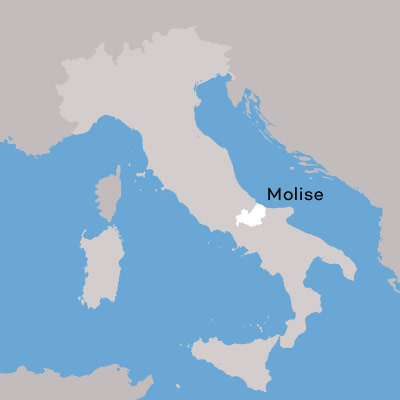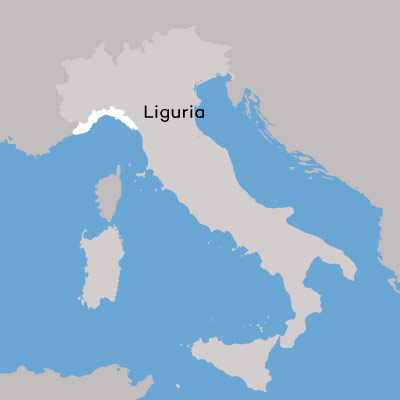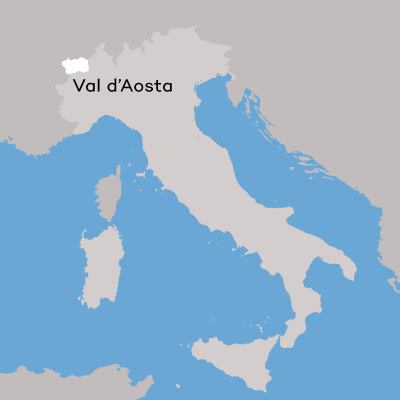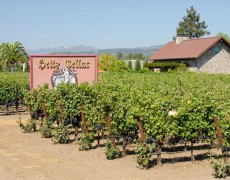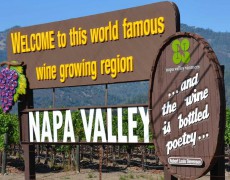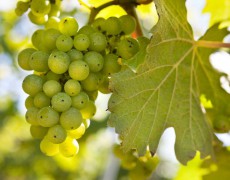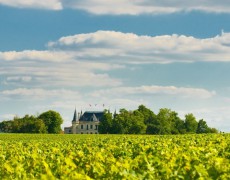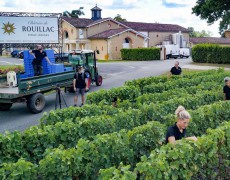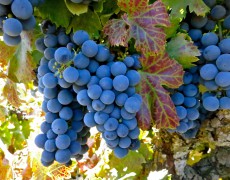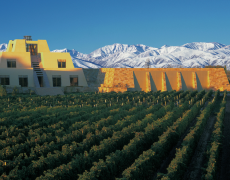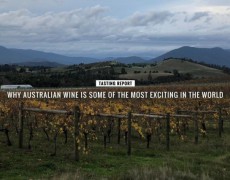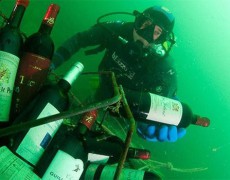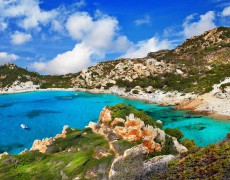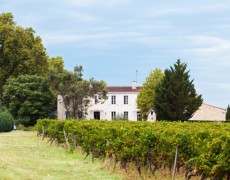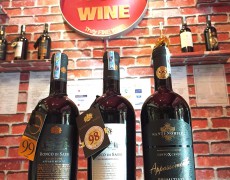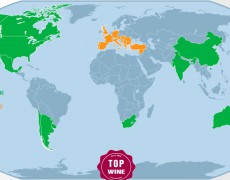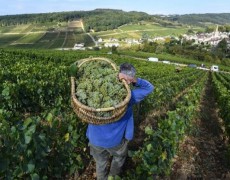Getting into Italian wine is a neverending adventure of new wines to taste. The book Wine Grapesidentifies 377 unique indigenous wine grapes in Italy. With the existence of biotypes or subvarieties (genetically the same but with morphological and physiological differences), many believe this number is much higher. Add on to this 408 D.O.P. (Denominazioni di Origine Protetta) or regional wine quality denominations (DOC + DOCG), many of which have multiple styles, and you have an even larger number. To put it into perspective, if you tasted a new Italian wine each week, it would take you 20 years to taste your way through Italy.
If you tasted a new Italian wine each week, it would take you 20 years to taste your way through Italy.
Fortunately, each of Italy’s 20 regions specializes in just a few primary wines and this is where you can start. Below you’ll find a list of Italy’s 20 major regions, their vineyard plantings (from 2010), and their major varieties or wine blends along with a few tasting notes to describe them. There are 51 wines listed below and if you’ve tried them all, you’ll gain a profound understanding of Italian wine… just remember to take decent notes!
Italian Wine Exploration Map
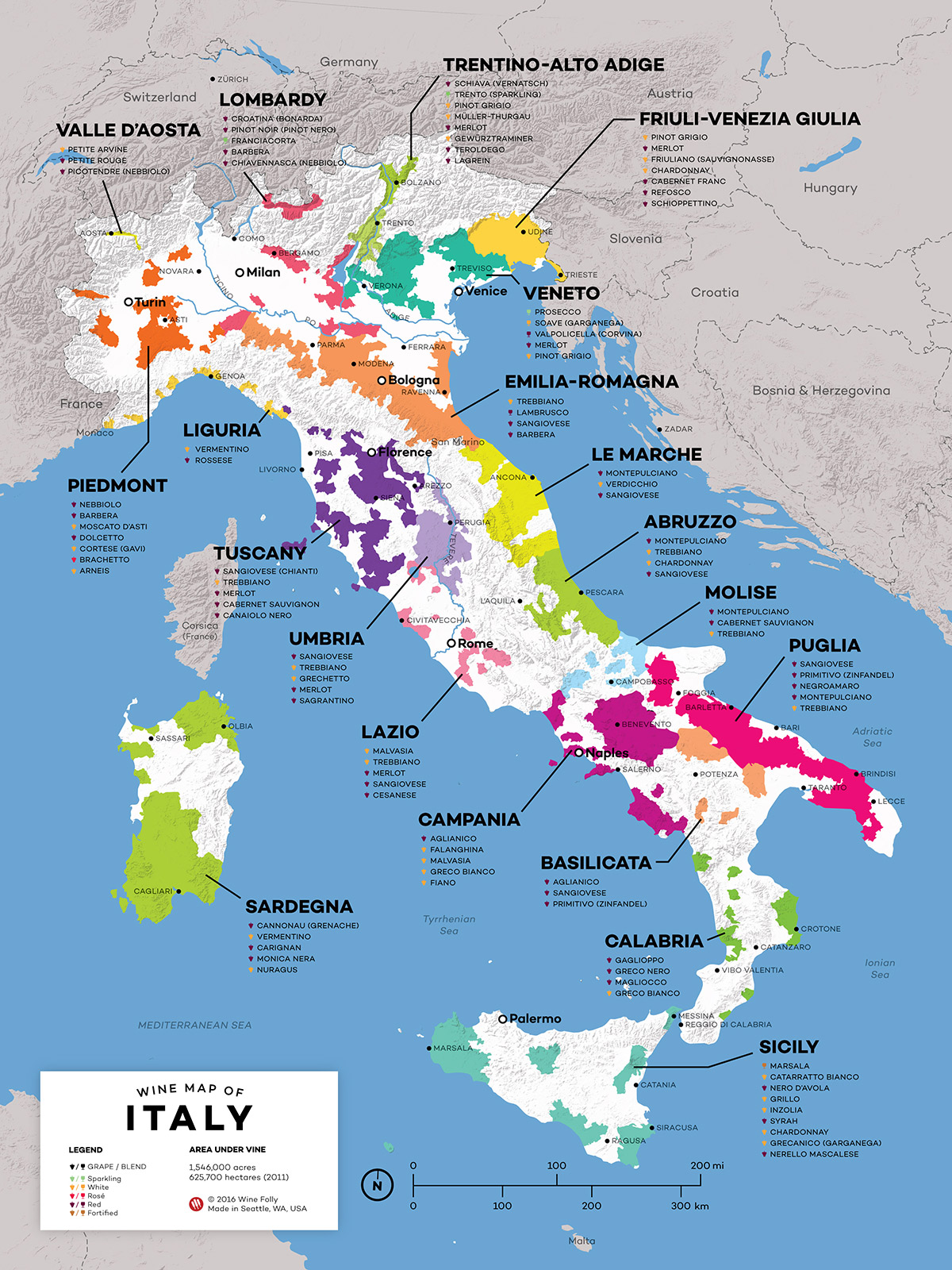 Map of Italy’s wine regions is available as a 12x16
Map of Italy’s wine regions is available as a 12x16
Sicily 257,152 acres / 104,068 hectares
- Nero d’Avola (red): A bolder red wine variety with fruity flavors of plum, raspberry sauce and licorice with fine tannins with a somewhat smoky, spiced finish. Pairs excellently with rich roasted meats and veggies.
- Inzolia, Grillo and Catarratto (white): Three white wine grapes typically used for Marsala but also make for great, more full-bodied, chardonnay-like whites. Think lemons, yellow apples, mango, notes of tarragon and a refreshing salty sea breeze.
Puglia 204,500 acres / 82,760 hectares
- Primitivo (red): This red wine explodes with sweet red strawberries, blackberries, leather and a whiff of smoke. It’s the same grape as Zinfandel in the US and will cozy alongside BBQ burgers.
- Negroamaro (red): A deeper, darker red wine from Puglia with more plum and herbal notes of dried sage and oregano. There’s a Negroamaro blend with Malvasia Nera and together they make perfect balance in a rich red wine called Salice Salentino DOC.
Veneto 191,858 acres / 77,644 hectares
- Prosecco (sparkling): The most famous sparkling wine from Italy is grown mostly in Veneto around the region of Valdobbiadene. Keep your eyes peeled for wines labeled with the sub-regions of Colli Asolani and Valdobbiadene Conegliano or Prosecco Superiore. Read more about Prosecco here.
- Garganega (white): A grape found mostly around Soave and Gambellara (and labeled as such). These wines are dry and lean with notes of preserved lemon, honeydew melon, and a touch of green almond on the finish. Learn more about Soave.
- Corvina (red): Corvina is the most important of a blend of 3 grapes (Corvina, Rondinella, and Molinara) used in Valpolicella and Bardolino. Wines offer tart red cherry, cinnamon, carob and green peppercorn flavors. A great wine to try is Valpolicella Superiore Ripasso.
- Merlot (red): Merlot is planted nearly all over Italy and has a large presence in Veneto where wines offer red cherry fruit in a more elegant style. There are several regions that use Merlot in Veneto (it’s one of the most planted grapes) including Colli Euganei, Colli Berici, Breganze and Vicenza.
Toscana / Tuscany 147,862 acres / 59,839 hectares 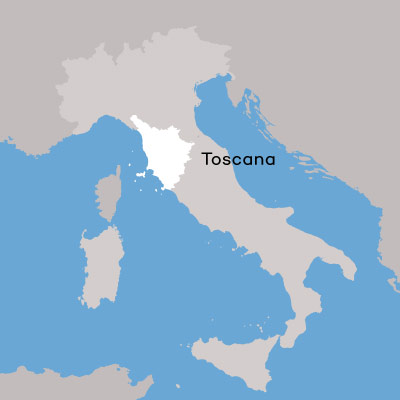
- Sangiovese (red): The most planted red wine of Tuscany and all of Italy is famous from the regions of Chianti, Montalcino and Montepulciano in Tuscany. Wines offer raspberry, roasted tomato, and balsamic flavors with an earthy whiff of wet clay. There are many great values to try including Chianti Superiore, Vino Nobile di Montepulciano and Montecucco.
- Super Tuscan (red): Some wines from Tuscany use made-up names and include Merlot, Sangiovese, Cabernet Sauvignon and Cabernet Franc in a blend referred to as a “super Tuscan.” Wines offer bold black cherry and raspberry flavors with cocoa and subtle notes of leather.
Emilia Romagna 134,859 acres / 55,796 hectares
- Lambrusco (red sparkling): A grouping of several red grape varieties that make for light-bodied sparkling red wines with notes of strawberries, blackberries, rhubarb and hibiscus. There are several sweetness levels available from Secco (dry) to Dolce (sweet).
Piedmont 137,872 acres / 46,317 hectares
- Barbera (red): A juicy red wine with dominant flavors of tart cherry and licorice with a subtle dried herbal note (like oregano) on the finish. Wines have low tannin and plenty of quenching acidity. Seek out Barbara d’Asti and Barbera d’Alba.
- Dolcetto (red): A juicy red wine with lower acidity that bursts with flavors of black plum, boysenberry, violet and sometimes mocha flavors. Wines often have bolder, crunchy tannins. Look out for Dolcetto d’Alba and Dolcetto di Dogliani Superiore.
- Moscato d’Asti (sparkling): A delicately floral sweet wine that explodes with aromas of mandarin orange, honeysuckle, orange blossom and pear.
- Nebbiolo (red): The grape of Piedmont’s most famous wine region called Barolo, but the wine is also known by several other regional names (Langhe Nebbiolo, Barbaresco, Gattinara, Roero, etc). This wine offers red cherry fruit and floral strawberry notes with a frame of bolder gripping tannings.
- Cortese (white): A lean, dry white wine that’s most known labeled as the region Gavi. Wines have intense graphite-like minerality, with herbs, citrus, a viscous body, and often a note of grapefruit pith on the finish.
Abruzzo 79,539 acres / 32,189 hectares
- Montepulciano (red): Not to be confused with Vino Nobile di Montepulciano, a Sangiovese wine from Tuscany, Montepulciano is a wine grape that makes medium-bodied red wines with plum, boysenberry and coffee flavors with subtle notes of herbs and crushed black pepper. Most notably look for Montepulciano d’Abruzzo and Rosso Conero (from Marche).
- Trebbiano (white): One of Italy’s most planted, but least talked about, white grapes that produces medium to full-bodied white wines with citrus, apple, and tropical fruit flavors in a similar style to Chardonnay.
Campania 57,290 acres / 23,185 hectares
- Aglianico (red): A full-bodied red wine with deep savory notes of white pepper, smoke and cured meats that give way to subtle notes of black cherry and spiced plum. Aglianico has high tannins and acidity that make it so the wine improves after a decade of aging. From Campania seek out Aglianico del Taburno.
- Falanghina (white): A fuller bodied white (similar to Chardonnay) with peach, lemon and pear flavors with subtle notes of honey and sweet-smelling flowers.
Lombardy 57,052 acres / 23,089 hectares
- Bonarda (red): aka Croatina and not the same Bonarda from Argentina (it’s confusing), this grape is commonly made in a barely sparkling style with juicy black fruit flavors and supporting notes of black and green peppercorn. The region most known for this style is labeled Oltrepò Pavese Bonarda.
- Pinot Nero (red): Classic Burgundy-styled Pinot Noir wines grow all over Oltrepò Pavese and are made into red, rosé and sparkling (blanc de noirs) wines.
- Grasevina (white): aka Riesling Italico or Welschriesling A light-bodied dry white wine with apple and citrus flavors that have tropical undertones of pineapple and mango.
Friuli-Venezia Giulia 47,566 acres / 19,250 hectares
- Pinot Grigio (white): One of two top regions making the best Pinot Grigio in Italy. Wines are dry, lean and minerally with subtle notes of white peach, lemon-lime, and subtle salinity.
- Merlot (red): An earthy style of Merlot wine with notes of leather and clove with juicy cherry flavors.
- Sauvignon (white): Usually a blend of Sauvignon Blanc and Sauvignonasse with green, zesty flavors of gooseberry, lime, honeydew melon, lemon grass and pea shoots.
- Refosco (red): A spicy tart red wine with notes of tart cherries and blackberries enveloped in peppery, flinty notes and lower tannin.
Sardinia 45,627 acres / 18,465 hectares
- Cannonau (red): aka Grenache In Sardinia, wines have a distinctly leather and strawberry-like note with a juicy full-bodied style and medium tannins.
- Vermentino (white): A dry, medium-bodied white wine with flavors of grapefruit, lime, mango and apple flavors with flowery daffodil-like aromas. Wine to find: Vermentino di Sardegna and Vermentino di Gallura
- Carignano (red): aka Carignan. Wine bursting with red berry fruit, balsamic and leather-like flavors with a smoother, supple low tannin finish. Wine to find: Carignano del Sulcis
Marche 41,377 acres / 16,745 hectares
- Sangiovese (red): Typically a more herbaceous style of Sangiovese with ripe plum and berry flavors, bold tannins and dried herbs on the finish. Look for Colli Pesaresi Sangiovese.
- Montepulciano (red): Smoky tobacco, mocha and wild berry flavors that range from supple and smooth to chewy on the finish. Look for Rosso Conero.
- Verdicchio (white): A lean, dry white wine with pear skin and preserved lemon flavors supported with a creamy oily palate. A great wine for pairing with fish. Look for Verdicchio dei Castelli di Jesi.
Lazio 40,527 acres / 16,401 hectares
- Frascati (white): A blend of white grapes that primarily include Malvasia and Trebbiano but may also include Chardonnay and others. Wines are usually relatively light alcohol with flavors of lemon and flinty-like notes (due to the region’s volcanic soils).
- Merlot and Sangiovese (red blend): Blended wines feature primarily Merlot and/or Sangiovese and offer blackberry, chocolate, mint and tobacco-like flavors. This is essentially a “Super Lazio.”
- Cesanese (red):
An ancient bold rustic red wine with savory notes of roasted meats, wild berries, and scorched earth. Read more about Cesanese.
Trentino-Alto Adige 38,691 acres / 15,658 hectares
- Trento (Sparkling): Using Chardonnay grapes, Trento makes a blanc de blancs style of sparkling wine. Wines have aromas of yellow apple, lemon peel, honeycomb and creamy bubble finesse.
- Pinot Grigio (white): One of the 2 top regions for Pinot Grigio in Italy. Look for Pinot Grigio labeled from either Alto Adige or Trentino.
- Teroldego (red): A bold-but-juicy red wine with notes of blackberries, sweet anise, orange peel and sweet tobacco smoke.
- Lagrein (red): A rustic, earthy red with black cherry and plums wrapped in espresso, graphite, and fine-grained tannins.
- Schiava/Vernatsch (red): A light-bodied, dry, fruity and floral red wine with aromas of sweet cherry, strawberry, violet and sometimes cotton candy-like flavors. Read up on Schiava
Umbria 30,865 acres / 12,491 hectares
- Sangiovese (red): A full-bodied style of Sangiovese with raspberry, plum and tobacco flavors supported with ample acidity and bold chewy tannins. Great examples to try include Montefalco Rosso and Torgiano
- Grechetto (white): A lean, dry white wine with melon and starfruit flavors that lead into a minerally, zesty finish. Most notably you’ll find the wines of Orvietto, which include a blend of Grechetto and other varieties as well as wines labeled Grechetto from Umbria and its sub-regions.
- Sagrantino (red):Quite possibly the world’s most high tannin red wine. It exudes deep, lush plum, blackberry, black cherry and subtle notes of violet, sage and bergamot. Tannins build with bitter green flavors on the palate.
Calabria 24,179 acres / 9,785 hectares 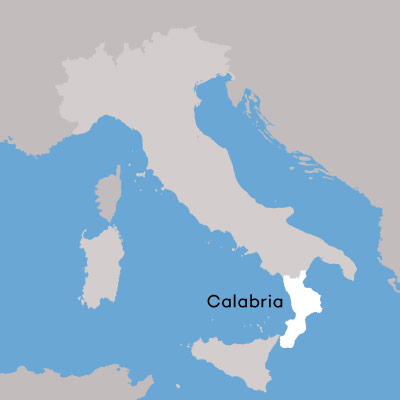
- Gaglioppo (red): Spiced cedar, dusty leather and herbs reveal crushed cherry and dried cranberry flavors.
Molise 12,736 acres / 5,154 hectares
- Montepulciano (red): A dry, full-bodied, moderately tannic red wine with flavors of sweet wild berries, prunes, smoke and cocoa dust. Montepulciano del Molise has a special Riserva bottling that has extended aging time and is usually exceptional for the value. There’s also Biferno Rosso, which is a blend of Montepulciano and Aglianico.
- Tintilia Del Molise (red): A very rare full-bodied wine with blackberry, black plum, violet and cocoa dust aromas. It can have bolder tannin and is said to be able to age a long time.
Basilicata 12,016 acres / 4,863 hectares 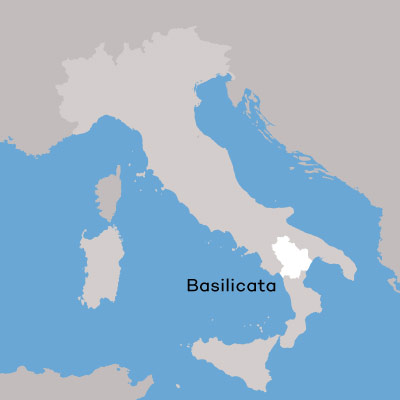
- Aglianico (red): A full-bodied red wine with deep savory notes of white pepper, smoke and cured meats that give way to subtle notes of black cherry and spiced plum. Aglianico has high tannins and acidity and improves with a decade of aging. From Basilicata seek out Aglianico del Vulture. Read more about Aglianico.
Liguria 3,800 acres / 1,538 hectares
- Vermentino (white): In some areas the wines are called Pigato which is a unique biotype of Vermentino that tends to have slightly higher aromatics and a rich, waxy texture. Wines offer aromas of aromatic green herbs, citrus zest, and spice. One of the more intriguing whites of Liguria is a blend of primarily Vermentino, Albarola and Bosco called Cinque Terre from around La Spezia.
Val d’Aosta 1,144 acres / 463 hectares
- Petit Rouge (red): A light red wine with aromas of cranberry, wild huckleberry, rose, dill, and wet leaves. The DOCs of Enfer d’Arvier, Torrette, and Chambave all have high percentages of Petit Rouge in the blend.
- Petite Arvine (white): A light-bodied white wine that’s popular in Switzerland (in the Valais region) as well as Aosta valley. Wines taste of Grapefruit and Honeydew melons with high acidity and a little bit of salinity.
Source: winefolly.com
